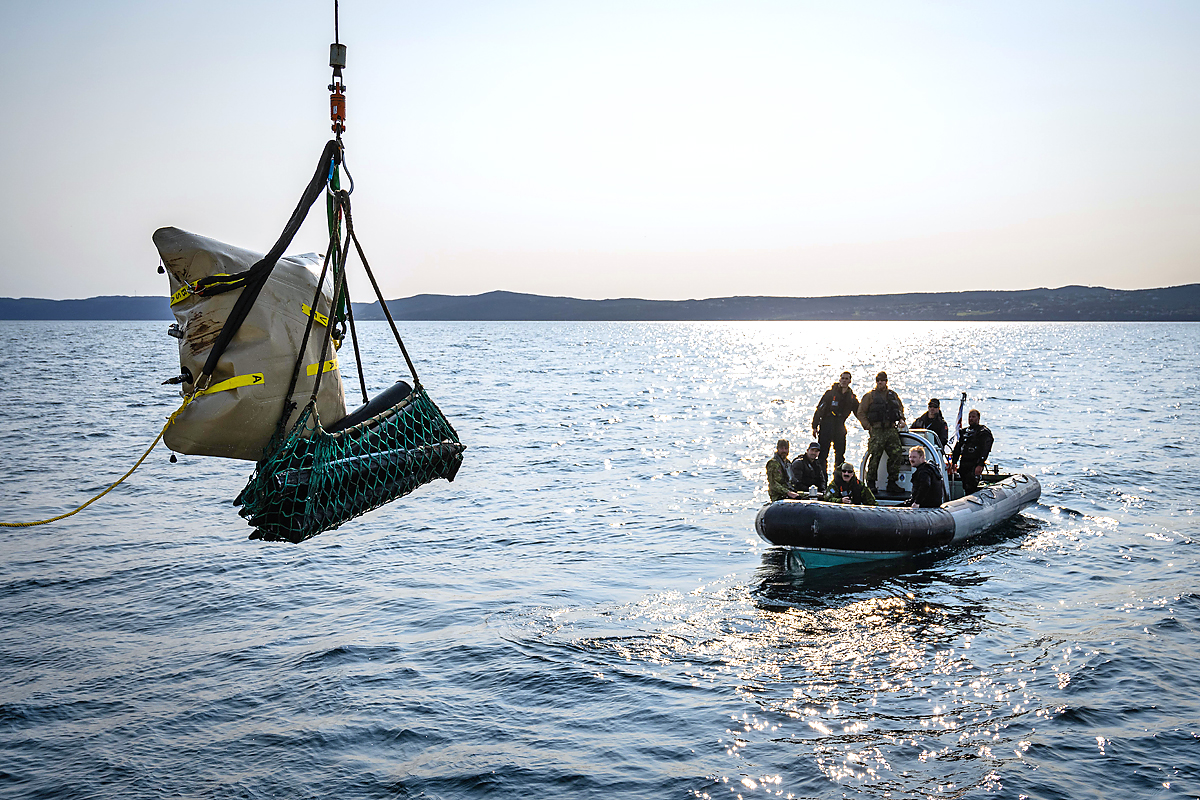Newfoundland wrecks cleared of explosives
By Lookout Production on Aug 31, 2021 with Comments 0
Peter Mallett
Staff Writer
–
Beneath the icy blue water off Belle Island, Newfoundland, are the remnants of naval wartime history – sunken ships.
It’s a favourite spot for recreational divers, but with any sunken warship, there are dangers associated with unexploded ordnance and ammunition.
In July, a team of clearance divers from Fleet Diving Unit Pacific and Atlantic, and Combat Divers from 4 Combat Engineer Support Regiment spent three weeks finishing the removal of these items, which began in 2019.
Clearing the site of hazards will allow the Government of Canada to declare the shipwrecks a national historic site.
The sunken relics are freighters SS Saganaga, SS Lord Strathcona, SS Rose Castle, and Paris-Lyons-Méditerranée 27. In the Second World War, they were equipped with weaponry and explosives for protection against German U-Boat attacks during the Battle of the Atlantic. They were tasked with carrying iron ore from Belle Island’s mine to steel mills in Nova Scotia as part of the war effort. Over 60 sailors died when German submarines sunk them.
Military divers were tasked with removing the final 60 pieces of 4.75-inch deck gun rounds and small arms from the hulls of the four sunken freighters. A similar operation by clearance divers in 2019 removed and destroyed 140 pieces of ordnance.
With this mission, divers operated from the deck of HMCS Moncton, with support personnel from Naval Reserve Unit HMCS Cabot in St. John’s, Nfld.
“Visibility underwater on most days was near perfect, and from a sightseeing angle it is easy to see why the site is such a popular tourist attraction; the colours and sea life around the wrecks is spectacular,” says MS Joseph Falletta, Mine Countermeasure Maintenance Supervisor with FDU(P), one of four divers from Maritime Forces Pacific who took part in the mission.
Sea life encountered ranged from cod fish to a family of Minke whales.
“We believe the whales are residents of the area and kept an eye on us throughout the deployment,” he adds.
Before starting their mission, divers were uncertain if they would be handling live ammunition designed to cause maximum damage to enemy warships and submarines. Thankfully, says MS Falletta, none of the ordnance removed was fused. They were still in their original shipping containers located in ammunition lockers underneath the gun decks, notably on the SS Lord Strathcona.
“Once inside the ammo lockers, we encountered very poor visibility due to the rust and debris being stirred up and falling from the deckheads when our [air] bubbles would hit it,” says MS Falletta, adding they used the Ultra Lightweight Diving System.
To get the ordnance out, divers attached them to lift bags and floated them to the surface. They were then transferred to Moncton.
Since the ordnance was required to be disposed of the same day, gun rounds and ammunition were taken to a quarry in Holyrood, with assistance from the RCMP and Royal Newfoundland Constabulary. They were destroyed by FDU (A) Explosive Ordinance Disposal Technicians.
“All four wrecks have been rendered safe from explosives and are now safe for civilian diving,” says MS Falletta. “For me, this mission was a career high. I got to do something really neat and challenging while ensuring our sovereign waters were made safe for people to enjoy.”
Filed Under: Top Stories
About the Author:






